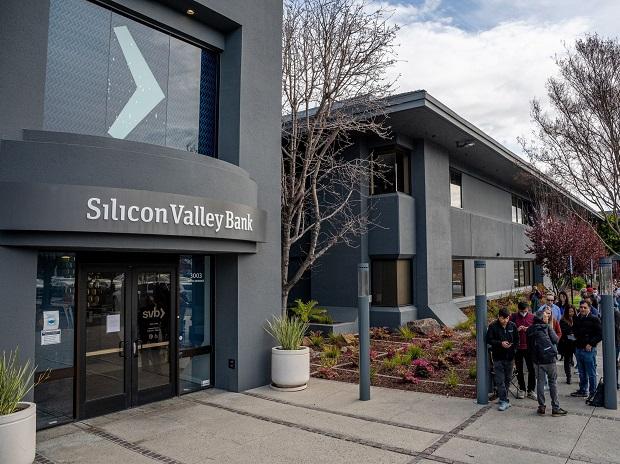[ad_1]
Life was already tough for startups. Funding had dropped to the lowest in five years, venture capital investors were getting skittish, and wealthy angels started holding onto their cash instead of sharing it like candy. Then Silicon Valley’s own bank shut its doors, halting payrolls and forcing founders to stop managing their businesses and focus on the only thing that matters: cashflow.
When the nexus of entrepreneurship woke Monday morning after a weekend full of uncertainty, they learnt that while Silicon Valley Bank may not be saved, the deposits it held are safe. That doesn’t mean countless fledgling companies are, though, nor the lifestyles the more-wealthy among them enjoyed.
Startups in the tech hub raised less than $10 billion during the fourth quarter, the lowest since 2017 according to CB Insights. Only 465 deals were inked in that period, the fewest in five years. Ironically, SVB’s collapse had little direct relationship to the slowdown in funding. Instead, VCs and founders are getting a lesson in interest rate and duration risk.

Having taken in more than $120 billion in deposits — a large chunk likely wired directly from VC’s accounts at SVB to startup accounts at the same bank — the Santa Clara-based institution had the unfortunate problem of holding too much cash. So it bought long-dated agency-issued debt. When the US Federal Reserve raised rates, the value of those bonds fell. But the deposits in its bank — a liability — remained the same. It faced a $15 billion hit to its balance sheet — not because VC and startup deals plunged, but because the bank mismanaged duration risk.
Despite a guarantee from the Treasury Department, Federal Reserve and Federal Deposit Insurance Corp. that all deposits are safe — beyond the $250,000 per account assurance from the FDIC — SVB’s collapse could have a massive impact on how the startup ecosystem operates.
Silicon Valley Bank became the financier to tech stars by offering an array of products tailored to their needs, that few other institutions dared. Founders and investors loved it, and it counted half of all venture-backed companies as clients.
“As an innovator, you probably hold private or illiquid assets, and are likely to have financial needs for atypical purchases and terms that work with your cash flow,” SVB Private says on its website.
Among the items offered by SVB Private: Private jet financing, a business it was particularly proud of, crowing just a year ago about hiring a new aviation-finance specialist. Also on the menu: money to fund ownership stakes in private or public companies, and even backing investments in venture capital or private equity funds.
Each of these are standard offerings and help pad out the income statements of even the largest banks. But financial institutions tend to offer wealth-management services to customers who actually have wealth. SVB didn’t have such qualms, and customers were fiercely loyal as a result — even as a bank-run put their deposits at jeopardy.
Beyond looking after executives, and ensuring they flew in comfort, SVB was an important staple on the balance sheets of startups. While VC-funded equity is the most famous source of financing, SVB pioneered the venture debt industry by offering loans to early-stage companies. Founders love the idea of getting cash to build their business without giving up precious equity, so this was a hit product.
They also enjoyed SVB’s no-nonsense approach to offering the basic financial services every young company needs, such as payments and billings, products that could take weeks to set up at a Wall Street bank.
As the FDIC calms depositor nerves and unravels the mess left by a tumultuous week, dozens of other banks and financiers will pick up thousands of customers and billions of dollars in business. But Silicon Valley will be left wondering if their new bank truly has their back.
[ad_2]
Source link



